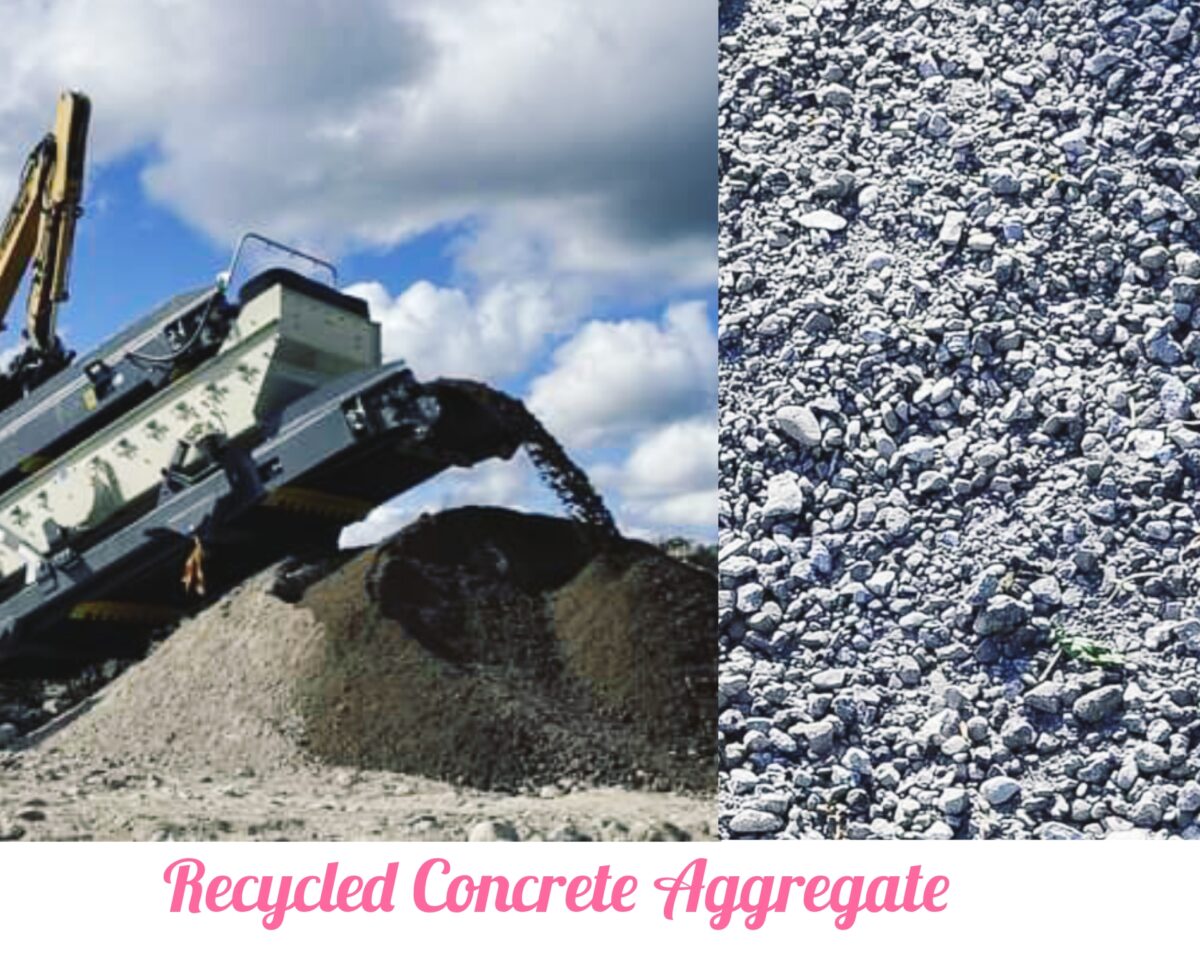Table of Contents
What Is Recycled Concrete Aggregate?
Recycled concrete aggregate is made from crushed construction and demolition waste. This waste consisting primarily of concrete with other aggregate components such as sand, gravel, slag and crushed stone. Concrete is the primary component of recycled concrete aggregate.

Manufacturers use methods to crush and compress existing waste concrete, mixing it with aggregates to produce cost-effective concrete aggregates with precise sizes and quality. The process also promotes recycling of waste materials that might otherwise take up valuable space in landfill sites.
Production Process
Producing recycled concrete aggregate begins with collecting demolished concrete from roads, bridges, and buildings. This collected concrete undergoes refinement, where it is carefully checked for the presence of any materials like wood or metal chunks that could impact the strength of the final product.
After the refinement process, the concrete is fed into crushing machines that use powerful impact force to break down large chunks and stones. This crushing step transforms the old concrete into smaller, more manageable pieces.
Crushed concrete is mixed with an aggregate, such as sand, to achieve the required consistency and density. This combination enhances the quality and usability of the recycled concrete aggregate, making it a sustainable alternative to natural aggregates in construction projects.
The entire process helps reduce waste and reduce the demand for virgin resources, promoting environmentally friendly practices in the construction industry.
Properties Of Recycled Concrete Aggregate
- Recycled concrete is processed to achieve suitable sizes. The method of crushing, whether mechanical or manual, impacts the concrete’s strength. While complying with standards, fine aggregates may be larger and more angular, resulting in harsh and unworkable concrete. To improve workability, adding natural sand is recommended. Washing the recycled aggregate is optional, and the crushing procedure affects the amount of adhered mortar.
- Aggregate particle grading influences the required mixing water for workability. More fines increase water demand, potentially lowering concrete strength unless cement content is increased. Recycled sand is discouraged due to its high absorption capacity, leading to shrinkage effects.
- The density of crushed concrete aggregate is lower than that of natural aggregate.
- Recycled aggregate exhibits higher water absorption than natural aggregate, affecting both fresh and hardened concrete properties. Avoiding recycled sand helps mitigate its absorption capacity and potential shrinkage effects, impacting workability.
- Loss Crushed concrete aggregate conforms to ASTM international standards concerning los angeles abrasion loss.
Applications Of Recycled Concrete Aggregates
- Using recycled concrete aggregate for new road and highway construction reduces the need for natural aggregates.
- Recycled concrete aggregate is a cost-effective material for constructing building foundations.
- Recycled sand offers a sustainable solution for various landscaping purposes.
- Recycled dust is commonly used to backfill trenches, providing an eco-friendly alternative.
- Different types of recycled aggregates can be used for erosion control, stabilizing slopes and preventing soil erosion.
- Recycled aggregates can be used as a base material for railway tracks, supporting sustainable transportation infrastructure.
- Recycled concrete aggregate is commonly used for compaction in construction projects.
- Recycled aggregates, including pipe bedding, are commonly used for surrounding pipes in underground utility installations.
- Recycled topsoil serves as a versatile material for landscaping and other construction purposes.
- Recycled aggregates can be used in the construction of parking lots and other paved areas, reducing environmental impact.
Pros And Cons
Pros
- Recycled concrete aggregate serves as a cheaper alternative to quarried stone.
- It exhibits high durability, making it particularly suitable for wet or soft ground conditions.
- The production of recycled concrete aggregate consumes less energy compared to traditional concrete.
- It helps preserve natural environments as it does not require mining operations.
- Companies investing in fuel-efficient technology using recycled concrete aggregate may enjoy potential tax rebates.
- With an average water absorption value of 7.5%, it offers better protection from seepage compared to standard concrete with an average water absorption rate of 3.7%.
Cons
- If an excessive amount of aggregate is mixed into concrete, it can significantly impact the strength of the material.
- The aggregate and concrete used in the recycling process must undergo refinement to avoid challenges such as cracks and uneven surfaces.
- Regular inspection of the material is necessary to ensure its quality.
